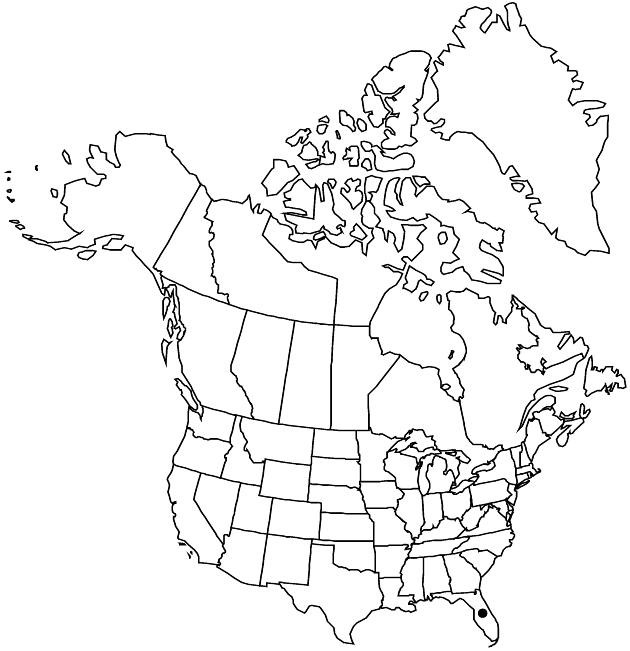Pectis linearifolia
Symb. Antill. 5: 276. 1907.
Annuals, 4–40 cm; herbage lemon-scented. Stems decumbent to erect (very leafy), glabrous or puberulent (in decurrent lines). Leaves linear, 10–50 × 1–3 mm, margins with 2–6 pairs of setae, faces glabrous (abaxial dotted submarginally with round oil-glands 0.2–0.5 mm). Heads borne singly or in congested, (leafy) cymiform arrays. Peduncles 0–1 mm. Involucres narrowly campanulate to cylindric. Phyllaries distinct, linear or linear-oblanceolate, 5–6 × 1–1.5 mm (dotted with scattered, elliptic oil-glands 0.4–0.5 mm). Ray florets 5; corollas 4.5–5.5 mm. Disc florets 4–10; corollas 2.5–3 mm (2-lipped). Cypselae 2.25–3.25 mm, puberulent; pappi (ray and disc similar) of 2–5 antrorsely barbed bristles or awns 1.5–2.5 mm plus shorter, barbellate scales. 2n = 48.
Phenology: Flowering mostly Aug–Dec.
Habitat: Open sites, sandy-gravelly soils with grasses and other herbs
Elevation: 0–50 m
Distribution

Fla.
Discussion
Reports of Pectis linearifolia from Jamaica were based on misidentifications of diminutive, short-peduncled individuals of P. glaucescens (D. J. Keil 1986). In Florida, P. linearifolia and P. glaucescens are largely allopatric; they occasionally occur in mixed populations. No hybrids are known.
Selected References
None.